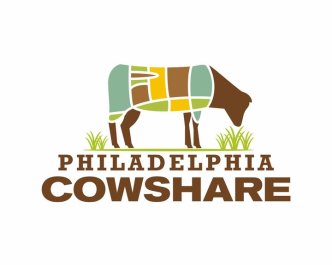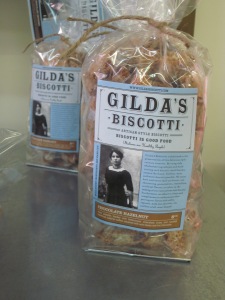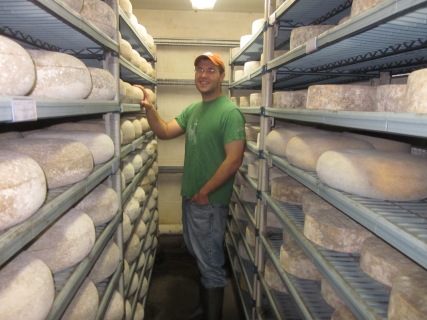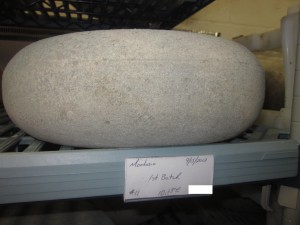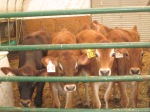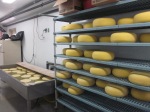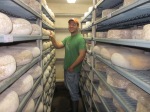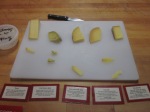
The Sweet Life Bakery owners Stephen Wilson and Jill McClennan pose for a picture in front of the Vineland bakery.
The Sweet Life Bakery, located on East Landis Avenue in Vineland, has been on my radar for quite a while now, as slow foodies and casual food fans alike have often spoken in hushed voices of this “little place” in Vineland. Though the bakery-cafe certainly has the homey feel of a modern general-store-meets-coffee-shop, the constant string of awards and press coverage has assured that South Jersey is paying attention.
With its locally sourced ingredients and its (sadly uncommon) commitment to taking the words “from scratch” seriously, the Sweet Life Bakery has been recognized by many as a delicious example of South Jersey’s slow, small, and sustainable. I sat down with Stephen Wilson to find out more about what makes the Sweet Life the talk of the town.
Q: How long has the Sweet Life been open?
A: September 1st was our fifth anniversary, but my wife and I are both trained pastry chefs, so we’ve been in the business since high school. For a while we were living in San Francisco and working for other people …When we started out it was just the two of us in 2007. Now I think we have about 13.
Q: I’ve never really seen this kind of bakery-cafe combination before; I guess I was expecting the Sweet Life to be more of an industrial bakery. Why go with a bakery that is also a cafe?
A: The bakery cafe is becoming more prevalent because it’s a good way of diversifying your income. The biggest in that industry is Panera, which is the leader of the bakery-cafe world.
Q: Sweet Life’s received a lot of awards; they’re all over your Facebook posts and taped in the windows here. What’s some of the most flattering recognition you’ve received?
A: On Trip Advisor, we’re ranked the No. 1 restaurant in Vineland, and then a couple months ago Cat Country Radio voted us #1 in Vineland.

The Sweet Life Bakery offers its own bright, modern interpretation of the coffee shop format.
(A full list of awards and recognition for the Sweet Life was available until recently on the bakery’s website. Rest assured that there are many, including the Best Wedding Cake award from South Jersey Magazine)
Q: What kind of foods do you buy from local sources?
A: (The coffee is) roasted in Millville, so it is locally roasted. It comes from a company called KMO: Kafe Magnum Opus. All of our house coffee and espresso is fair trade and organic. We get a lot of local produce, when it’s in season. So now we have a lot of apples, sweet potatoes, and tomatoes. … Two people, both in Vineland, will give us eggs. So if there are good, tasty, local options, we’ll go for that first.
Q: Are there any misconceptions about the Sweet Life, or about what it takes to make a cake?
A: The cakes are sometimes more expensive than people think they would be. Partly because it takes longer to make a cake than people would expect. A lot of layer cakes, that’s three layers of cake and then two layers of filling. And the artwork takes a lot of time. And we don’t use mixes or anything like that.

A peek into the Sweet Life fridge shows an array of cakes dressed in the “crumb coat” that will keep cake from crumbling into the final coat of icing.
Q: Really, people in the bakery industry will use mixes?
A: The vast majority of places use mixes. Every bakery says they make everything from scratch. They don’t. … Here, bakery companies will sometimes send reps around, and they’ll say, “We have a great danish mix,” and I tell them “No, we make everything from scratch.” And they’ll say, “Oh, well we have a great fruit filling” or “We have a great donut mix.”
Q: What is the appeal of using mixes? Is it just cheaper? Or are they higher quality than the ones you can get in the grocery store?
A: It’s cheaper that way. Most people are very price-conscious. And there is a market for that. A lot of people are used to cake being made that way anyway.
I hope to post some more of the pictures from the Sweet Life on here soon. While on a tour of the bakery, I was offered a bit of carrot cake with praline icing—an unprecedented flavor combination in my sad little TastyKake-and-Little-Debbie existence. I’ll be sure to plan a stop at the Sweet Life Bakery on my next trip down to Cape May; my only regret is not having eaten more!
